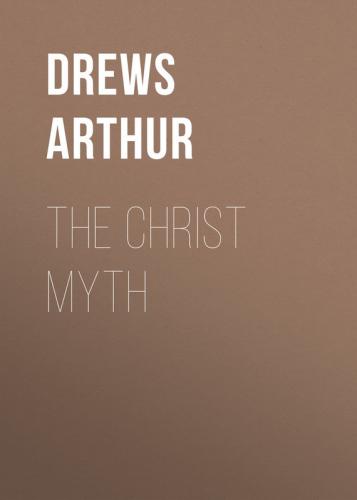3
The same is true of Clemen, who, judging by his “Religionsgeschichtl. Erklärung d. N.T.” (1909), appears to be acquainted with Robertson’s masterpiece, “Christianity and Mythology,” only from a would-be witty notice of Réville, and furthermore only cites the author when he thinks he can demolish him with ease.
4
A. Hausrath, in his work “Jesus u. die neutestamentlichen Schriftsteller,” vol. i. (1908), offers a striking example of how light a matter our theologians make it to overthrow the attacks of the opponents of an historical Jesus. In scarcely three pages at the commencement of his compendious work he rejects the myth theory of Bruno Bauer with the favourite appeal to a few individual and historical features of the Gospel tradition which are intrinsically of no significance, finishing up this “refutation” with a reckless citation from Weinel which proves nothing for the historical character of Jesus.
5
Cf. also his work “Moses, Jesus, Paulus. Drei sagen varianten des babylonischen Gottmenschen Gilgamesch,” 2nd ed., 1909.
6
Cf., for example, “Jesus Vier Vorträge, geh. in Frankf.” 1910.
7
In other respects the “progress” in the province of religious history is not so great as I formerly believed I could assume. That is to say, in essentials modern learning in this connection has only brought facts to light and given a new focus to points of view which were already possessed (cf. Dupuis and Volney) by the eighteenth century. In the twenties and forties of the nineteenth century investigations, unprejudiced and independent of theology, had already reached in the case of some of their representatives, such as Gfrörer, Lützelberger, Ghillany, Nork, and others, the point which is to-day again represented by the most advanced learning. The revolution of 1848 and the reaction consequent on it in ecclesiastical matters then again shook, on account of their radical tendency, those views which had been already arrived at. The liberal Protestantism, too, that rose as a recoil against orthodoxy in its effort to work out the “historical” Jesus as the kernel of Christianity on its part had no interest in again bringing up the old results. Indeed, it actually makes it a reproach to a person of the present day if he quotes the works of those earlier investigators, and reminds him that religious learning did not begin only with the modern Coryphaei, with Holtzmann, Harnack, &c. Whoever looks upon things from this point of view can most probably agree in the melancholy reflection of a reviewer of the first edition of “The Christ Myth,” when he says with reference to the “latest investigations”: “Apparently the whole learning of the nineteenth century so far as relates to investigations into the moving forces of civilisation and national upheavals will be considered by future research as an arsenal of errors” (O. Hauser in the
8
It has also been reckoned as a want of “method” in this work that I have often made use of a cautious and restrained mode of expression, that I have spoken of mere “suppositions” and employed locutions such as “it appears,” &c., when it has been for the time being impossible for science or myself to give complete certainty to an assertion. This reproach sounds strange in the mouths of such as plume themselves upon “scientific method.” For I should think that it was indeed more scientific in the given cases to express oneself in the manner chosen by me, than by an unmeasured certainty in assertions to puff out pure suppositions into undoubted facts. I must leave such a mode of proceeding to the historical theologians. They work purely with hypotheses. All their endeavours to obtain an historical kernel from the Gospels rest upon conjectures simply. Above everything, their explanation of the origin of Christianity simply from an historical Jesus is, in spite of the certainty and self-confidence with which it comes out, a pure hypothesis, and that of very doubtful value. For that in reality the new religion should have been called into life by the “all-subduing influence of the personality of Jesus” and its accompaniments, the visions and hallucinations of the disciples worked up into ecstasies, is so improbable, and the whole view is psychologically so assailable, and, moreover, so futile, that even a liberal theologian like Gunkel declares it entirely insufficient (“Zum religionsgesichtl. Verständnis d. N.T.,” 89
9
10
Cf. K. Dunkmann, “Der historische Jesus, der mythologische Christus, und Jesus der Christ” (1910). Cf. also Pfleiderer, “Das Christusbild des urchristlichen Glaubens in religionsgeschichtlicher Beleuchtung” (1903), 6
11
Cf. W. v. Schnehen, “Der moderne Jesuskultus,” 2nd ed., 1907, p. 41, a work with which even a Pfleiderer has agreed in the main points; also the same author’s “Fr. Naumann vor dem Bankrott des Christentums,” 1907.
